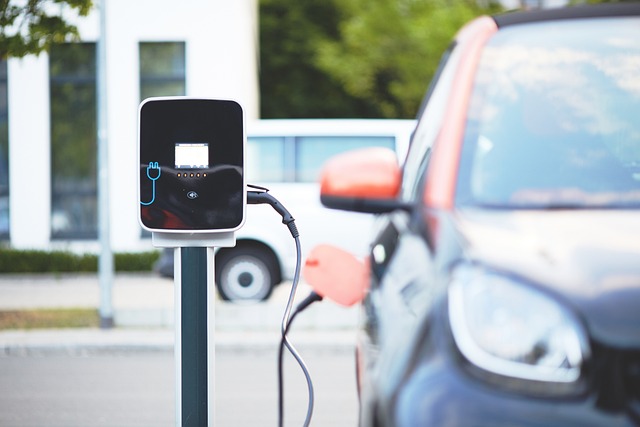Exploring Eco-Friendly Auto Trends
As the global focus on sustainability intensifies, the automotive industry is undergoing a significant transformation. The year 2025 marks a pivotal moment where eco-friendly auto trends are not just experimental concepts but mainstream realities influencing how vehicles are designed, manufactured, and operated. Consumers, manufacturers, and governments alike are driving this shift toward greener mobility solutions, aiming to reduce carbon footprints and combat climate change. This article explores the most prominent eco-friendly auto trends shaping the future of transportation.

The Rise of Electric Vehicles (EVs)
Electric vehicles have become the cornerstone of sustainable transportation. By 2025, EVs are expected to dominate new car sales in many regions worldwide, thanks to advances in battery technology, increasing public awareness, and supportive policy frameworks.
Advancements in Battery Technology
One of the critical factors accelerating EV adoption is the rapid improvement in battery technology. Lithium-ion batteries, the current industry standard, have seen consistent enhancements in energy density, charging speed, and longevity. By 2025, solid-state batteries are anticipated to enter the market, offering even greater range and safety. Solid-state batteries replace the liquid electrolyte with a solid one, reducing the risk of fires and enabling faster charging times. This innovation could significantly alleviate “range anxiety,” a common concern among potential EV buyers.
Expansion of Charging Infrastructure
Another major barrier to EV adoption has been the availability of charging stations. Governments and private companies are investing heavily in expanding charging infrastructure to support the growing number of electric vehicles on the roads. By 2025, fast-charging networks will become more widespread, allowing drivers to recharge their vehicles in minutes rather than hours. Additionally, wireless charging technology is gaining traction, with some cities piloting embedded road chargers that can power vehicles as they drive.
Government Incentives and Regulations
Many countries are implementing stricter emission regulations and offering incentives such as tax credits, rebates, and access to carpool lanes to encourage EV purchases. These policies aim to phase out internal combustion engine (ICE) vehicles gradually. For instance, several European countries and states in the U.S. have announced plans to ban the sale of new gasoline and diesel cars by 2030 or 2035. Such regulatory environments are creating a fertile ground for EV market growth.
Sustainable Materials and Manufacturing Processes
Eco-friendly trends in the automotive industry extend beyond the powertrain. Manufacturers are increasingly focusing on sustainability throughout the vehicle lifecycle—from raw material sourcing to production and recycling.
Use of Recycled and Renewable Materials
Car makers are incorporating recycled plastics, bio-based composites, and natural fibers into vehicle interiors and components to reduce reliance on virgin materials. For example, some automakers use recycled ocean plastics for door panels and carpeting, while others are experimenting with hemp and flax fibers as alternatives to synthetic materials.
Moreover, sustainable leather alternatives made from mushroom or pineapple fibers are gaining popularity in luxury electric vehicles. These materials not only reduce environmental impact but also appeal to ethically conscious consumers.
Green Manufacturing Techniques
Reducing the carbon footprint of vehicle production is another crucial focus area. Manufacturers are adopting renewable energy sources in factories, optimizing supply chains to minimize emissions, and implementing water-saving technologies. The concept of a “zero-waste” factory is becoming a realistic goal, with companies striving to recycle or reuse all production waste.
Robotics and AI-driven manufacturing also contribute to sustainability by enhancing precision and reducing material waste. Additionally, modular vehicle designs facilitate easier repairs and upgrades, extending the lifespan of cars and reducing the need for new manufacturing.
The Emergence of Autonomous and Shared Mobility
The shift toward eco-friendly transportation is also intertwined with new mobility concepts that reduce the number of vehicles on roads and improve efficiency.
Autonomous Vehicles for Efficiency
Self-driving cars promise to optimize driving patterns, reducing unnecessary acceleration and braking that waste fuel. Autonomous vehicles (AVs), especially when electric, have the potential to lower emissions significantly by maximizing energy efficiency.
By 2025, fully autonomous vehicles are expected to be more common in urban environments, particularly for ride-hailing and delivery services. These AVs can operate continuously, reducing downtime and congestion while promoting smoother traffic flow.
Shared Mobility to Reduce Carbon Footprint
Shared mobility services—such as car-sharing, ride-hailing, and micro-mobility options (e-scooters, bikes)—are helping reduce the reliance on personal vehicle ownership. Fewer cars on the road mean lower aggregate emissions and less urban space devoted to parking.
The integration of shared mobility platforms with public transit systems creates seamless multi-modal travel options, encouraging users to leave their cars at home. In 2025, many cities are redesigning infrastructure to prioritize shared and active transportation modes, further supporting sustainability goals.
Conclusion
The automotive industry in 2025 is at the forefront of a green revolution. Electric vehicles, sustainable manufacturing, and innovative mobility solutions are converging to create a cleaner, more efficient transportation ecosystem. While challenges such as battery disposal, raw material sourcing, and equitable access remain, ongoing technological advancements and policy support offer promising pathways forward. As consumers increasingly prioritize eco-conscious choices, the future of driving is not only electric but also smarter and more sustainable. Embracing these eco-friendly auto trends is essential to achieving global climate targets and ensuring a healthier planet for future generations.
Disclaimer: All content, including text, graphics, images and information, contained on or available through this web site is for general information purposes only. The information and materials contained in these pages and the terms, conditions and descriptions that appear, are subject to change without notice.




